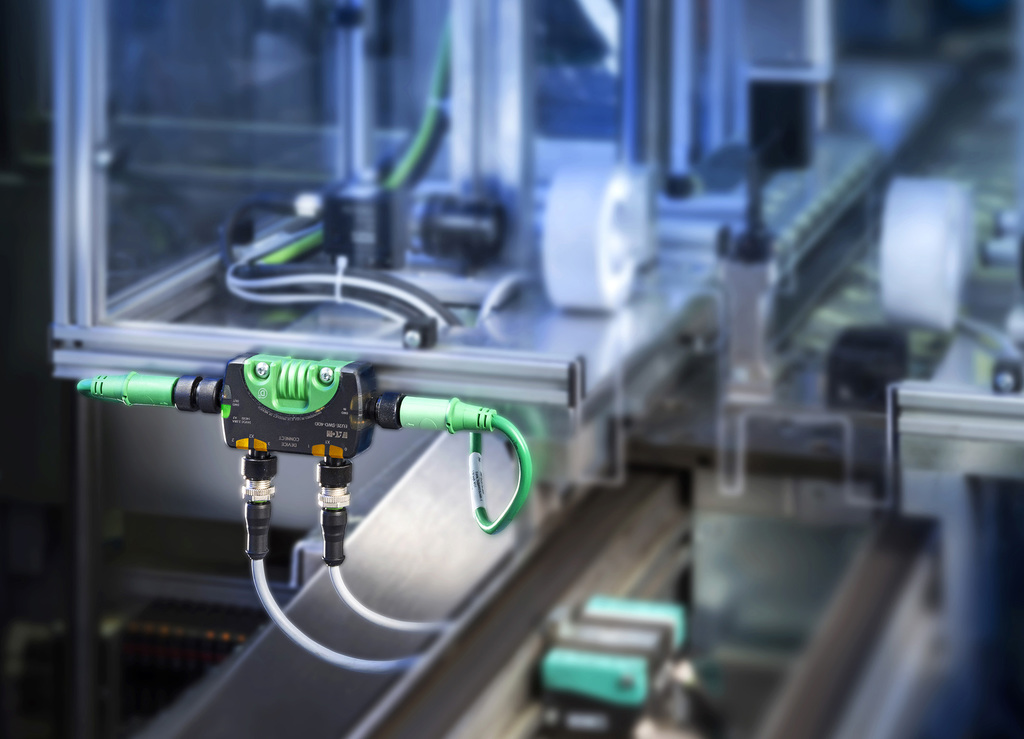
 |
Charlotte Stonestreet
Managing Editor |
| Home> | MACHINE BUILDING & ENGINEERING | >Materials & Components | >Direct connection |
Editor's Pick
Direct connection
19 May 2015
Power management company, Eaton, has added a new IP67 I/O module to its SmartWire-DT wiring system, greatly extending the use of the system outside the control panel by allowing it to connect directly to sensors and actuators. As a result, system builders now have valuable new options that give them more freedom of choice and improved diagnostic capabilities in an IP67 system architecture.

The new devices provide users with significantly simpler systems from design to assembly – the construction of new systems and the modification of existing machines can now be carried out with less cabling effort and with reduced use of materials.
Conventional methods of connecting sensors and actuators to machine control systems involve multiple challenges. With centralised control, all but the simplest systems involve a large amount of material and effort, especially if the machine covers a large area. With decentralised control using remote I/O modules, however, the granularity of the modules often does not match the number and type of peripheral devices present at each location, resulting in expenditure on unnecessary hardware. In both cases, a further problem is that expansion and modifications are difficult.
With the addition of the IP67 I/O modules to the SmartWire-DT range, Eaton has solved these problems. With SmartWire-DT, up to 99 devices can be connected directly to the control system over a cable up to 600 m long. The new module means that these devices can include sensors from Eaton’s extensive portfolio, which offers products ranging from mechanical position switches to high functionality inductive, capacitive and optoelectronic sensors.
As the IP67 I/O module has a standard M12 socket, it can also be used to connect all standard sensors and actuators with M12 plugs to the SmartWire-DT system. For sensors that have their own power supply, a power consumption measurement can be used to confirm that the sensor is properly connected, which simplifies and speeds system testing. The status of the module and its diagnostic messages can also be displayed from any connection point on the SmartWire-DT system.
The benefits of the SmartWire-DT approach are apparent in a wide range of applications. If a mixture of digital and analogue sensors and actuators are used, for example, the new I/O modules allow an optimised and cost-effective architecture to be achieved, as every sensor or actuator is connected individually.
With distributed applications, such as conveyor belts, it is possible to connect all of the sensors to the same SmartWire-DT cable, up to a maximum length of 600m. The direct connection of the sensors to the IP67 I/O module greatly reduces the amount of cabling needed. It also allows machine builders to route cables more easily and to install individual sensors and actuators wherever they are needed. Digital and analogue inputs and outputs can be mixed exactly as required.
When additional sensors or actuators need to be added to an existing SmartWire-DT installation, extra I/O modules can be fitted quickly and easily. This means that machine builders supplying new equipment no longer need to make special and potentially costly provisions for future expansion.
The SmartWire-DT product range now includes options for connecting one, two or four sensors or actuators. The connectors can be fixed to any suitable surface using screws or alternatively clips are available to mount them on standard profile rail.
The SmartWire-DT system gives users exceptional flexibility in the design of their control systems. They can use almost any PLC via a gateway (Profibus-DP, CANopen, Modbus-TCP, EthernetIP, Profinet, Powerlink or Ethercat) or they can choose an Eaton controller, such as those in the innovative XV100 range, with an integrated SmartWire-DT interface. By using simple streamlined concepts, this approach creates efficient solutions with fewer components, in line with Eaton’s Lean Solution strategy.
- COMPREHENSIVE SENSOR RANGE
- IE3 ready
- More safety for the switch cabinet
- New option for motor control
- Eaton adds Ethernet connectivity to MTL830 range multiplexers
- Small, flexible & efficient
- Direct valve integration
- Sectional load sense relief valve
- Intelligent use of automation crucial to successful implementation of ErP Directive
- Energy efficiency drive



















